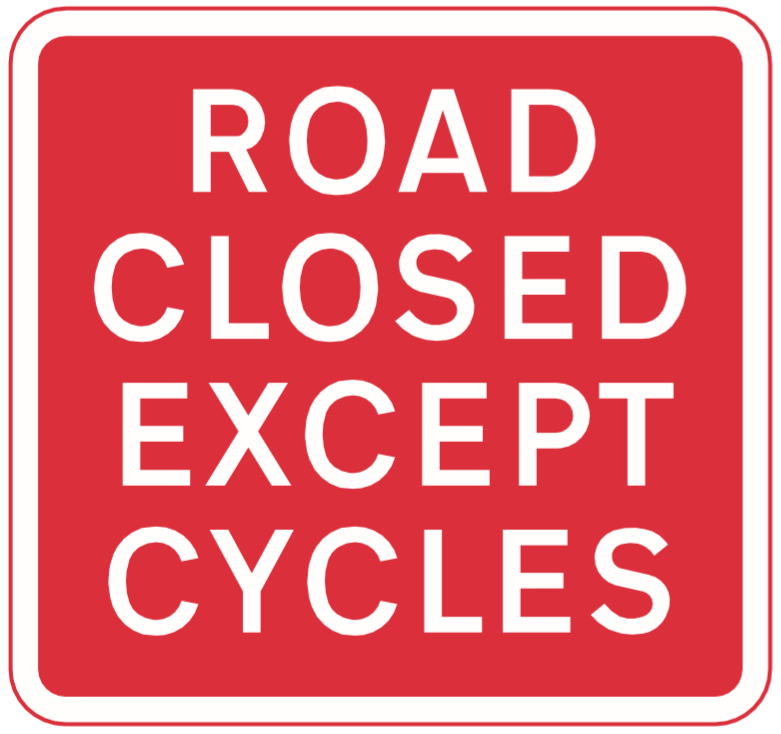In certain cases the location or nature of the works being undertaken will make it impossible to achieve a safe working area and maintain traffic or pedestrian flows around the works. In these cases a carriageway, footway or footpath closure will be required. This option can only be considered if there is a suitable diversion route for the affected traffic or pedestrians, and under no circumstances should pedestrian access be denied to any property or premises.
A risk assessment must be carried out on any diversion route to ensure it is suitable and safe for the diverted traffic or pedestrians.
Temporary closure of a carriageway to traffic
If it is necessary to close a road to vehicular traffic, the approval of the highway authority must be obtained. A Temporary Traffic Regulation Order or Notice will be required, and sufficient notice must be given to the highway authority to enable them to comply with statutory obligations. For emergency works, Temporary Traffic Regulation Orders or Notices should be requested as soon as their need is recognised.
Every effort should be made to maintain pedestrian access past the works and to maintain vehicular access to all properties and premises within the closure area. Under no circumstances may pedestrian access be completely denied to any property or premises.
If a safe route past the works for motor vehicles cannot be provided, consider whether there is sufficient room to maintain access for pedal cycles. To accommodate two-way cycle traffic past a temporary works site, the desirable minimum width of the cycle track is 2.5 metres but 3 metres is preferable.
Where cycle flow is light, and/or give-and-take working operates, it might be acceptable to reduce the width to 1.2 metres. A 0.5 metre safety zone will be required between the works and the cycle track. Where a road is closed to all but pedal cycles, the ‘Road closed except cycles’ sign should be used.

In order to close the road except for cycles, you will need a Temporary Traffic Regulation Order, so you will need to discuss this in advance with the highway authority.
Traffic control by one-way traffic flow
In some circumstances a full road closure may be avoided by the introduction of one-way traffic to reduce disruption and enable traffic flows to be maintained. This option can only be considered if there is a suitable diversion route for the affected traffic. A Temporary Traffic Regulation Order or Notice will be required. Sufficient notice must be given to the highway authority to enable them to comply with statutory obligations. For emergency works, Temporary Traffic Regulation Orders or Notices should be requested as soon as their need is recognised.
Warning: A risk assessment must be carried out on the diversion route to ensure it is suitable and safe for the diverted traffic.
Planning for a road closure
The planning should include:
- co-ordination with highway authority;
- providing information to affected residents/businesses;
- reference to Chapter 8 of the Traffic Signs Manual;
- consideration of how to keep disruption to a minimum;
- provision for pedestrians and other vulnerable road users; and
- termination, suspension or creation of bus stops within site or diversion route.
Caution: To proceed with this full road closure or reduction to one way flow, your supervisor, manager, or other competent person should consult the highway authority at the earliest opportunity.
Temporary closure of a footway
If it becomes necessary to close a footway adjacent to a road that remains open to vehicular traffic, a safe alternative route for pedestrians will be required. Refer to the Footway and footpath works – look after pedestrians section of this Code for further guidance. A traffic regulation order is not needed for temporary footway closures that require pedestrians to use the opposite footway or divert into a walkway provided in the carriageway, as detailed in this Code. In exceptional circumstances, such as where a footway closure involves a major detour, an order may be needed.
